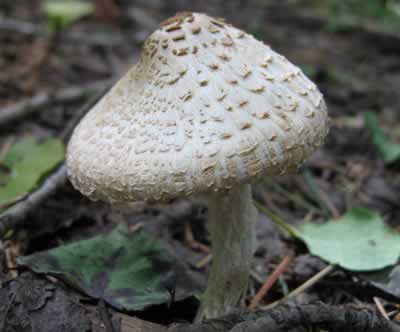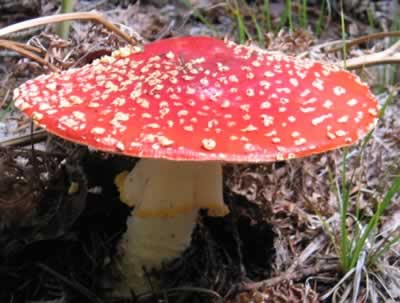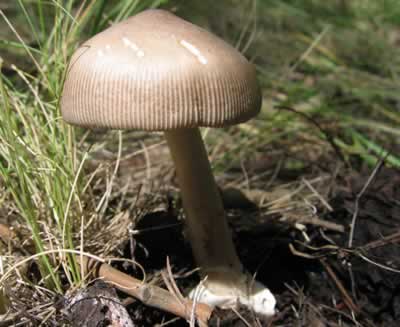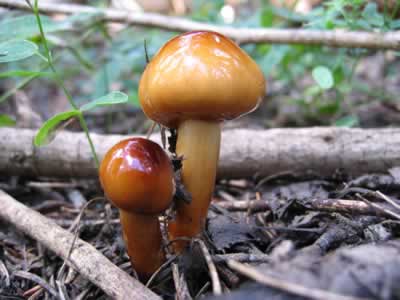Caps
There is a tremendous amount of information you can get about a mushroom just from its cap. And this is a great thing, as the cap is typically the first thing you see when you come across a mushroom!
The diagram to the right covers the general cap shapes, but there's many, many features present on the cap that are deserving of your scrutiny! Here are several more:
- Color, but this can be variable
- Texture such as scales and warts
- Dryness, or lack thereof
- Zonations of color or light / dark
- Striation (Vertical lines where the gills meet the cap)
- Color changes when bruised
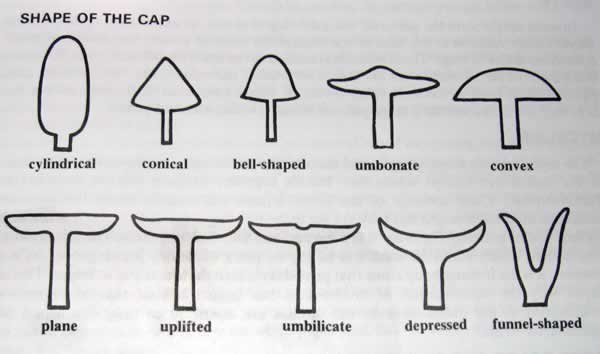
Diagram: David Aurora , Mushrooms Demystified
It is very important to know that many caps will start out concave when young, but then expand like an umbrella as they mature. Just think of the difference between a white button mushroom and a portabello, which are the same species and only different because of age! This is why it's important to see different levels of maturity within a species to understand how they change as they mature.
